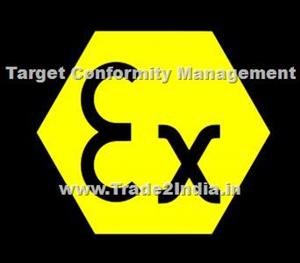
Atex Directive
We at TCMS in alliance with our partner Technicka Inspekcia, a.s Slovakia having full scope to certify the products:
[2000px-EX-logo] ATEX Manufacturers Directive 94/9/EC
This directive defines each of the following product groups for use in potentially explosive atmospheres:
Electrical and non-electrical equipment
Electrical and non-electrical protective systems
Electrical and non-electrical components
Electrical and non-electrical safety devices
The directive places responsibilities on the manufacturer of these products. The main responsibility of the manufacturer is to prevent the formation and ignition of explosive atmospheres. This may be achieved by using one of the well-established protection concepts (such as flameproof protection, or intrinsic safety), or by proving compliance directly against a set of ‘essential health and safety requirements’, which are given in the directive.
Under ATEX you can put the product in the market once you have successfully achieved EC type Examination and Quality Assessment Notification (QAN)
EC Type Examination: it is the comparison of the product against the requirements of the standards which is normally performed by visual inspection and testing of the product.
Quality Assessment Notification: to put the product on the market, the manufacturer must hold valid Quality Assessment Notification (QAN), under this it basically cover the Quality Management System to be maintained by the manufacturer as per EN 80079-34 for the Ex products. It requires an onsite audit and an annual surveillance audit with issuance of limited time certificate for 3 years.
ATEX For Non Electrical Products:
For Non Electrical Products which fall into Category 2 & 3 an EC type Examination in not required.
For category 2 Non Electrical Equipment, the technical file shall be submitted to the notified body and shall be archived/stored with Notified body for 10 years. An acknowledgment for archive of technical file will be issued by Notified Body, under this the technical file is not reviewed by the Notified Body.
For Category 3 Non Electrical Equipment, there is no legal requirement to submit the technical file with the Notified Body, the manufacture can self declare the compliance and can use the marking once the technical file is complete.












